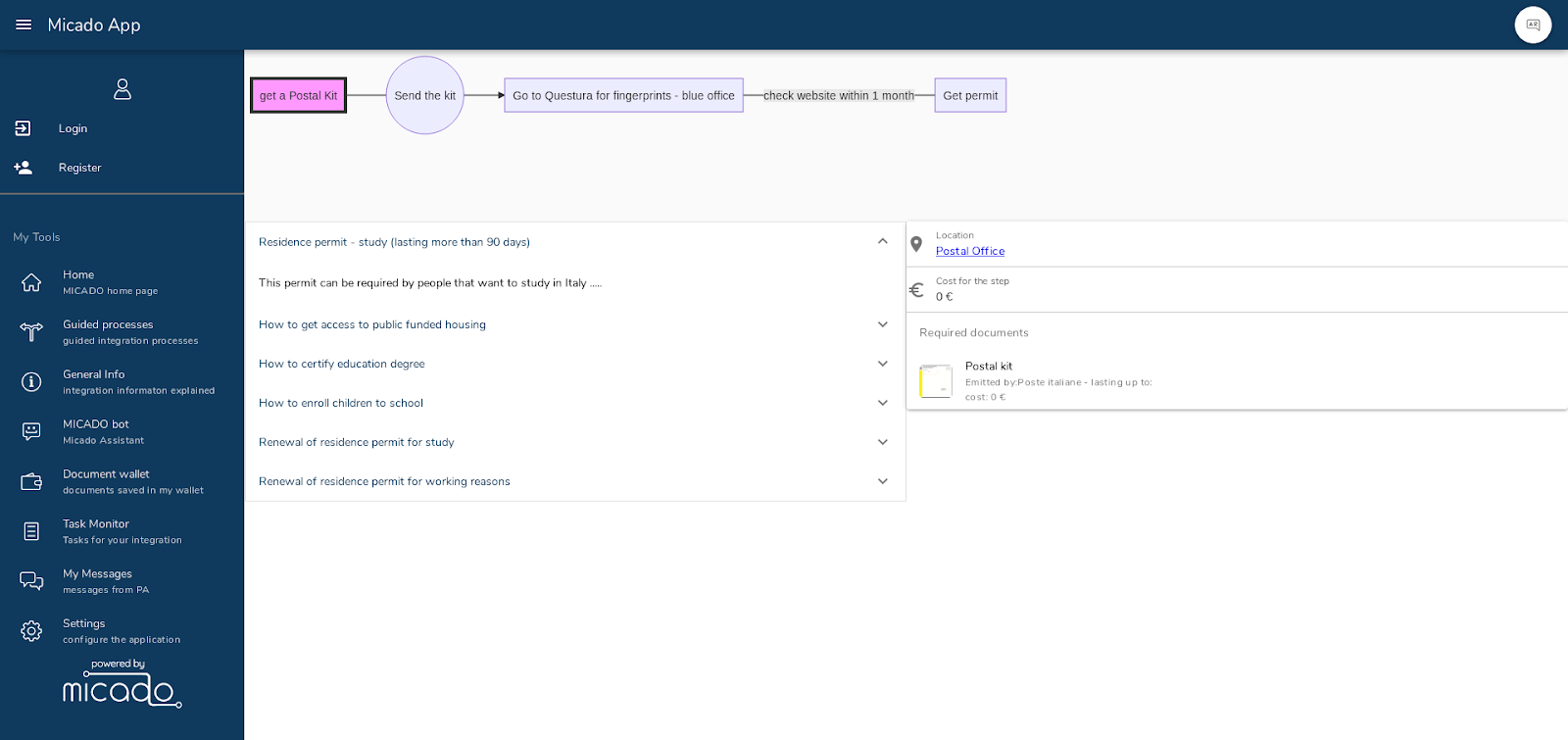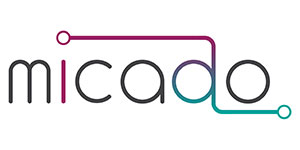
11 May Interview with Luca Gioppo, the lead of the technical development of the MICADO solution
In WP4 our team of developers work on the technical design and the integration of the components for a universally applicable MICADO solution. All works are based on the requirements and design vision defined in the previous Work Packages 2 “Local User Demand and Co-creation” and 3 “Concept Integration”. The cockpits and dashboards that are developed in this Work Package are designed to be used by three user groups: public authorities, NGOs and migrants. Therefore, different requirements on functionalities and layout have to be considered. Through hard work of the European team the “one-fits-all” solution comes to life. Luca Gioppo from CSI Piemonte is the leader of Work Package 4 “Technical Design and Development” and gives an insight into the work that is currently being done:
What are you and the developer team currently working on?
We work on X axes:
1) We need to consolidate, operate and update the operating environment for the whole team: Making different groups of people spread around Europe work together and deploying on a common environment is not a trivial thing.
2) We need to integrate the different components of the MICADO architecture: We decided not to “code” the whole MICADO solution, but to integrate components of the shelf, but this means that you have to learn those components and to use them properly, put the “wires” in the right place and tune the final configuration. The effort in the end is similar, but the result is much more sustainable in terms of evolution and operation.
3) Transforming the requirements in software design, trying to keep all the consortium updated on the evolution with an agile approach: We deliver weekly new features to help all partners appreciate the evolution of the MICADO tools and be able to send feedbacks.
4) Coding the product, this is the activity that all think about when you talk about development: writing code, testing it and allow end user to check it and give you a feedback.
There will be applications for three different user groups. What are the main characteristics of them and in what way are they different from each other?
We have 2 main typology of users in those three stakeholders: the first is the citizen, the migrant. This user mainly will interface with MICADO through a smartphone. This requires a design that is targeted to that device; some approaches in visualizing content have to adapt the the tool. Also we need to address the reduced capability to read of some potential users and to manage to include them we need to use text to speech solutions, icons and images to help him or her to navigate in the application.
The second typology of users are the operators within the public authorities or NGOs, these will work in the office, will have to do data entries and need a simple and fast tool. This requires a different design approach.
Obviously features of the application will also be different: public authorities and NGOs are providing content and managing the integration process of the migrant, the migrant is the subject searching for information.
How does your work fit into the project structure?
I believe that all the steps in the MICADO project are equally important, the following cannot exist without the previous. The technical design and development could not be done without the activities regarding the co-creation and concept integration, where we collected the real needs of the users and placed them side to side with what we were thinking when we wrote the proposal: we had to change our vision accordingly to that feedback. Now we are building the tool that will express the MICADO idea and placing it in the hands of the piloting partners to operate it. I see it as a flow more than a sequence of steps. Like in a river sometimes the water have to come back to overcome some obstacles.
Agility is a buzzword in software development – what is agile about working on the MICADO solution?
Agility is sometimes used as a buzzword to fill an emptiness of ideas; in MICADO following an agile approach means that, for example, we have short development cycles delivering results to the whole consortium on a regular basis, get approval and proceed with the next phase.
Another, more design oriented meaning of “agility” in MICADO is trying to design the architecture in a way that you can swap things once you go from the “generic MICADO” to the “local instance of MICADO”: The goal is to have an experience where if the municipality already has its tool for exposing data we manage to integrate it and get the data out with minimal effort and coding, removing perhaps our internal component in favour of the one owned by the municipality.
In your point of view, what are the benefits of working on a software solution in an international team?
The benefit is to go out of your comfort zone and confront with other approaches in organizing, designing, developing. Is a great opportunity to learn and to bring back in our company some value.
Thanks, Luca, for that insight!
The results of this work package are very important for the next step, the piloting of the universal MICADO solution.
